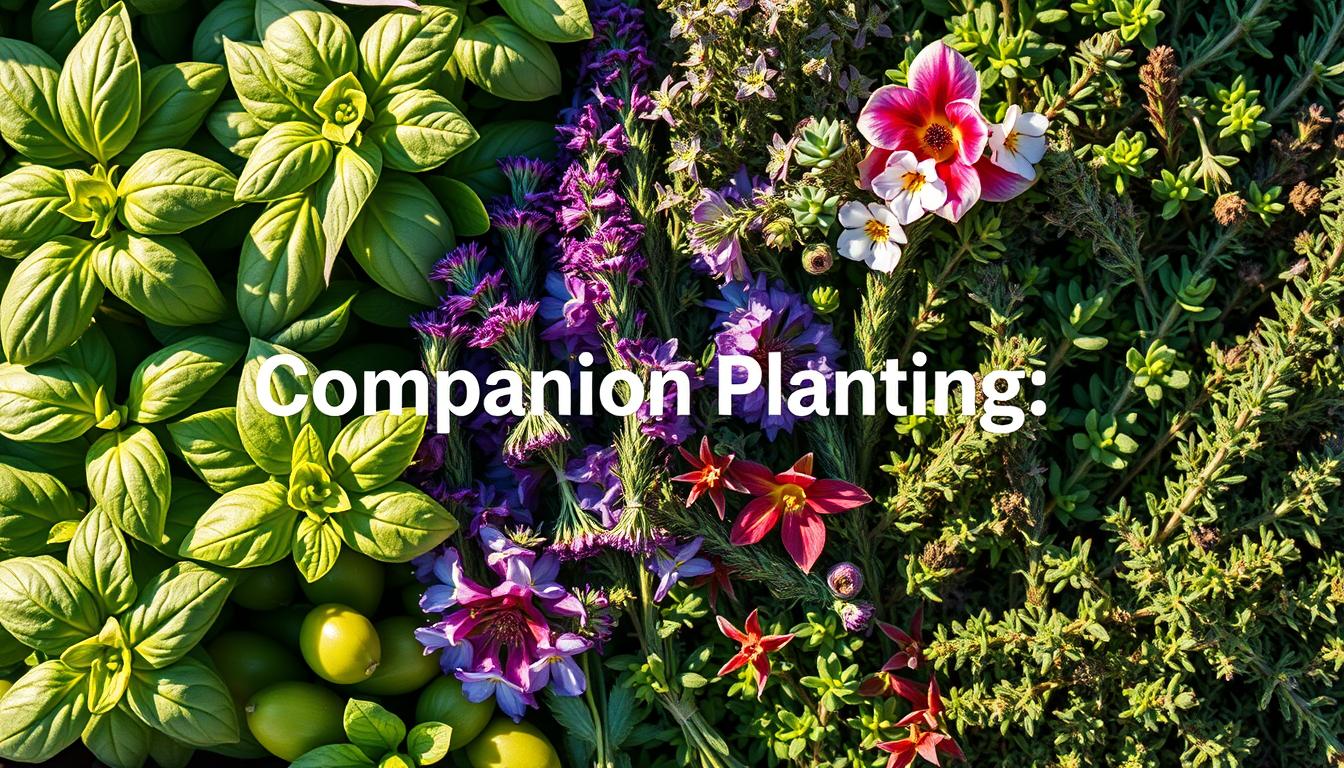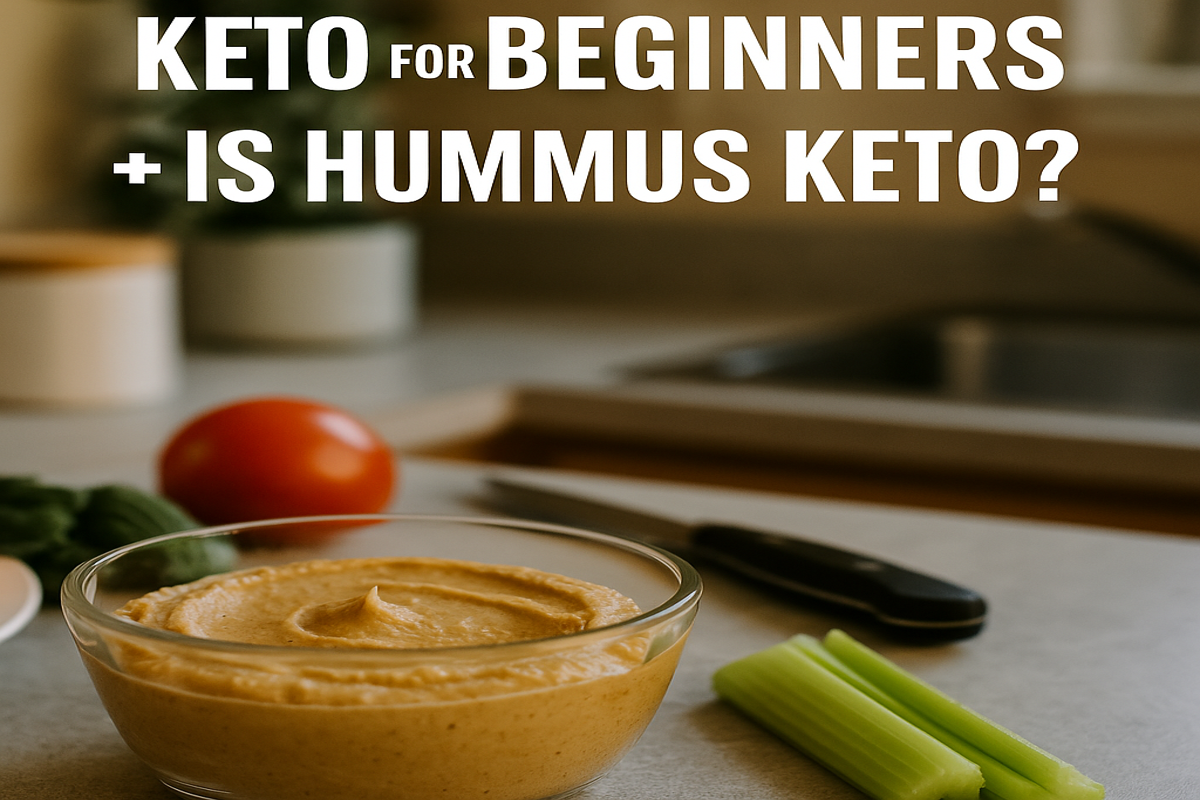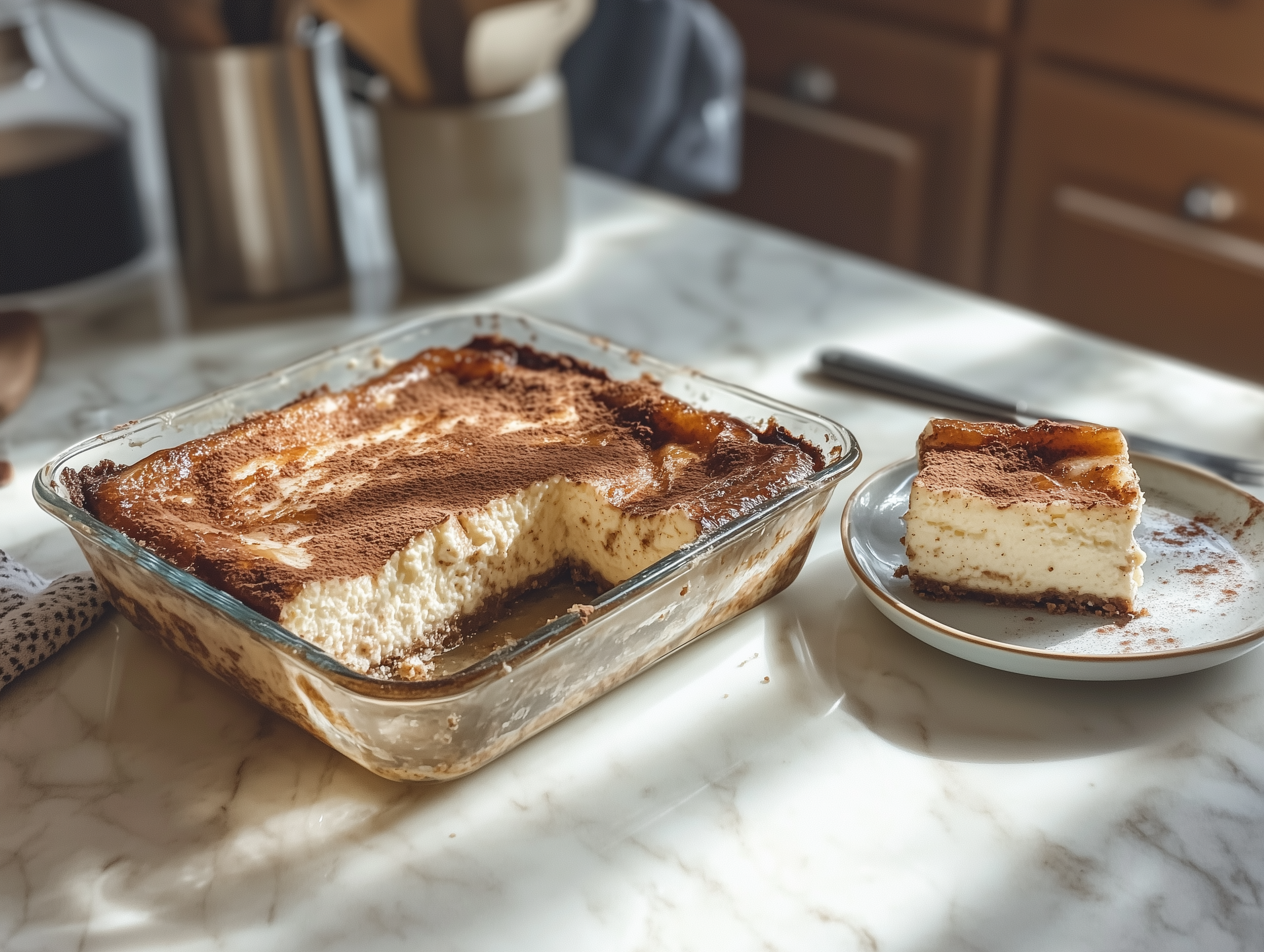Ever wondered why some herbs do great together while others don’t? Companion planting is the answer. It makes your herb garden amazing.
I love gardening and found out that some herbs are best friends. They help each other grow strong, keep pests away, and taste better. Companion planting herbs is more than a trick. It’s a smart way to grow a healthy garden.
Exploring companion planting, I learned that some herbs protect and help their neighbors. They keep bad bugs away or attract good ones. This makes your garden balanced and healthy.
Key Takeaways
- Companion planting maximizes garden space and plant health
- Some herbs naturally protect each other from pests
- Strategic herb pairings can improve overall garden productivity
- Different herbs have unique pest-repelling and attraction properties
- Understanding herb compatibility is key for successful gardening
What is Companion Planting?
Gardening is more than just growing plants. It’s about understanding how they work together. Companion planting is a way to make your herb garden better by pairing plants wisely.
Companion planting is a smart way to grow herbs together. It’s not just about putting them side by side. It’s about creating a system where plants help each other grow, fight pests, and stay healthy.
Understanding Plant Partnerships
Companion planting has many benefits:
- Natural pest control
- Improved pollination
- Enhanced flavor profiles
- Nutrient optimization
- Space efficiency
Benefits of Herb Garden Combinations
When I plan my herb garden, I think about how plants can help each other. Certain herbs can protect vulnerable plants, attract good bugs, or even make the soil better. For example, chives can keep aphids away and make other plants taste better.
Nature has its own complex network – companion planting lets us tap into that.
Knowing how plants work together helps us grow better herb gardens. These gardens can be strong and productive with little help from us.
Top Herbs That Grow Well Together
Creating a thriving herb garden is an art. It’s about knowing which plants go well together. My herb companion chart shows some exciting pairings that can make your garden vibrant and productive.
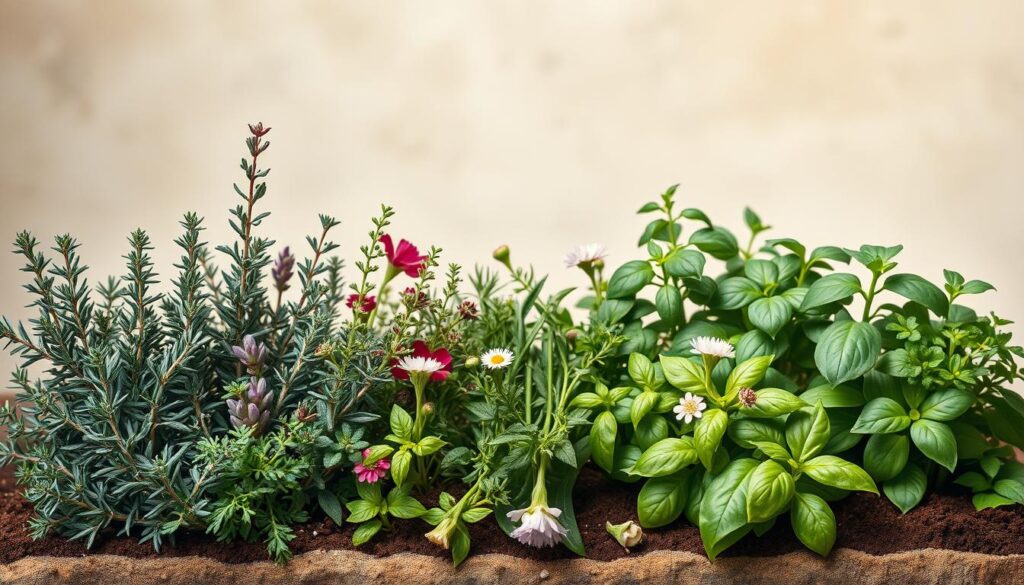
When planning your herb pairing guide, consider these amazing combinations. They not only grow well together but also boost each other’s flavors and growth:
Basil and Tomatoes: A Classic Partnership
Basil is a dream for tomato gardeners. This duo offers many benefits:
- Basil repels harmful pests like whiteflies and mosquitoes
- Improves the flavor of nearby tomatoes
- Attracts beneficial pollinators
Chives and Carrots: A Perfect Match
Chives are garden superheroes, best with carrots. They naturally keep pests away:
- Deters aphids and carrot flies
- Adds a subtle onion-like flavor to companion plants
- Helps improve overall garden ecosystem
Cilantro and Dill: Flavor Companions
These herbs share growing conditions and culinary synergy. They work together to:
- Attract beneficial insects
- Provide complementary flavors in cooking
- Support each other’s growth in the garden
Understanding these herb relationships helps create a more productive and harmonious garden. It thrives naturally.
Ways Companion Planting Enhances Herb Growth
Gardening is more than just planting herbs. It’s about making a space where plants help each other. Companion planting herbs is a smart way to keep plants healthy and productive.
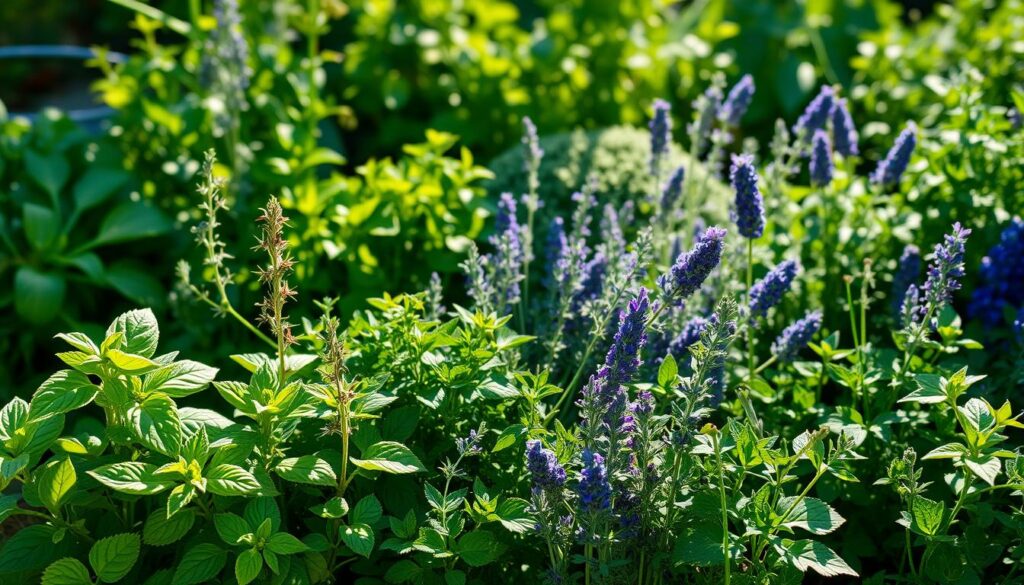
Companion planting is more than gardening. It turns your garden into a team effort. Plants work together to grow better, fight pests, and taste better.
Improved Pest Control
Some herbs protect against pests. For example, basil keeps away:
- Spider mites
- Mosquitoes
- Aphids
- Whiteflies
Enhanced Flavor Profiles
Companion planting also makes herbs taste better. Strategic herb placement boosts their flavor and aroma.
Maximize Space in Your Garden
Companion planting helps you grow more in less space. Some herbs grow well together. This lets you use every inch of your garden.
Nature’s design is about cooperation, not competition.
Best Companions for Basil
Discovering the right herb garden combinations can change your gardening experience. Basil is a versatile herb that grows well with certain companions. Knowing which herbs pair well can make your garden better and more harmonious.
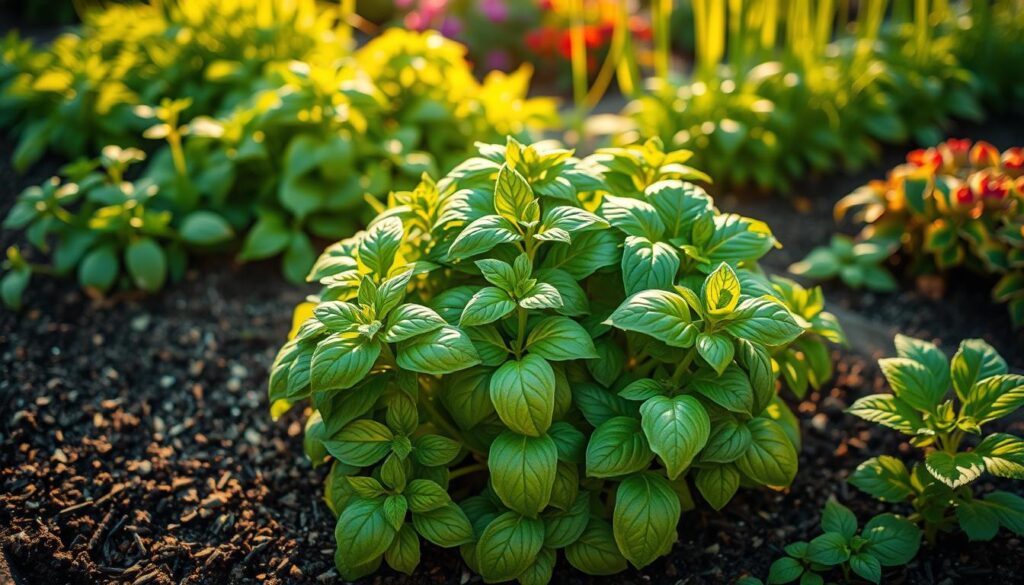
Basil has exciting partnership opportunities with other herbs. Its adaptable nature makes it a great companion for many garden plants. This brings both practical and flavor benefits to your herb garden.
Basil and Oregano: A Flavorful Duo
Oregano and basil are a fantastic team in the garden and kitchen. They share similar growing conditions, making them natural companions. Both prefer:
- Full sun exposure
- Well-drained soil
- Moderate watering
Their flavors complement each other in cooking. Planting them together creates a beneficial microclimate for healthy growth.
Avoiding Sage: Why Not to Plant Together
Not all herbs get along, and basil has some tough companions. Sage is a notable example of an herb that doesn’t mix well with basil. Their growth needs and chemical interactions can harm each other’s growth or oil production.
By choosing the right herb combinations, gardeners can create thriving spaces. Knowing which herbs complement each other is essential for successful companion planting.
Ideal Pairings for Mint
Mint is a powerful herb known for growing vigorously. As a gardener, I’ve learned it needs special care when planting with other herbs.
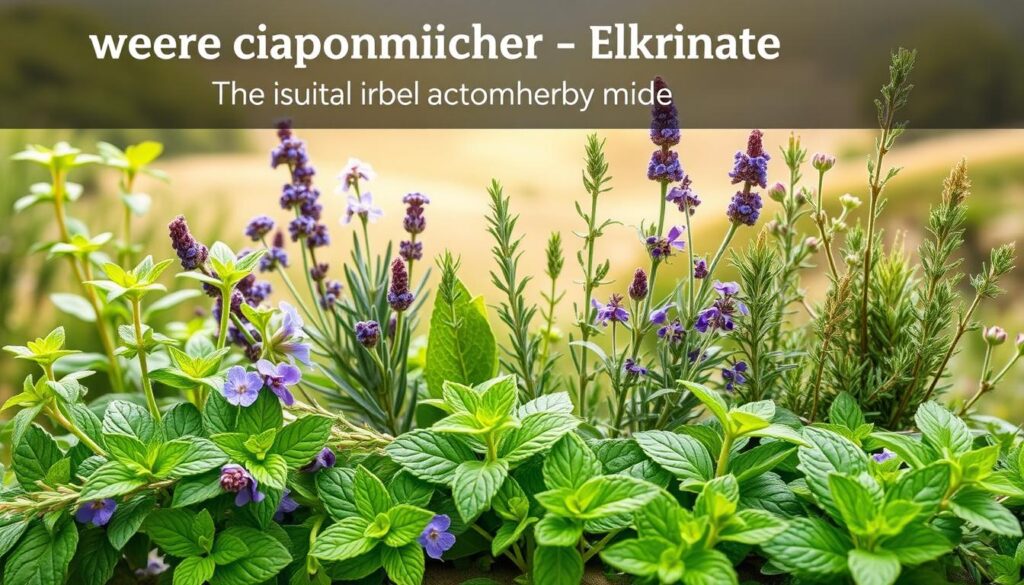
Knowing how mint grows is key to successful gardening. It spreads fast and can take over other plants. So, it’s important to manage its growth carefully.
Mint with Parsley: Complementary Companions
Mint and parsley don’t make good neighbors. They have different needs and can harm each other’s growth. It’s best to keep them apart or in separate pots.
- Keep mint in its own pot to prevent aggressive spreading
- Use barrier methods to control mint’s growth
- Select containers with sufficient depth for mint’s extensive root system
Crossing Mint with Other Herbs: Cautions
“Mint is like the wild child of the herb garden – beautiful, but potentially destructive if not carefully managed.” – Gardening Wisdom
Mint needs special care when pairing with other herbs. It grows well with some, like oregano, but can harm others. Placing mint strategically is important for successful planting.
- Avoid planting mint directly next to herbs with delicate root systems
- Create dedicated mint zones in your garden
- Use raised beds or containers to control mint’s spread
Understanding mint’s unique traits helps you garden with it successfully. This way, you can enjoy its aroma without harming your other plants.
Herbs to Plant Near Rosemary
Rosemary is a versatile Mediterranean herb with specific growing needs. Knowing which herbs grow well together can make your garden thrive.
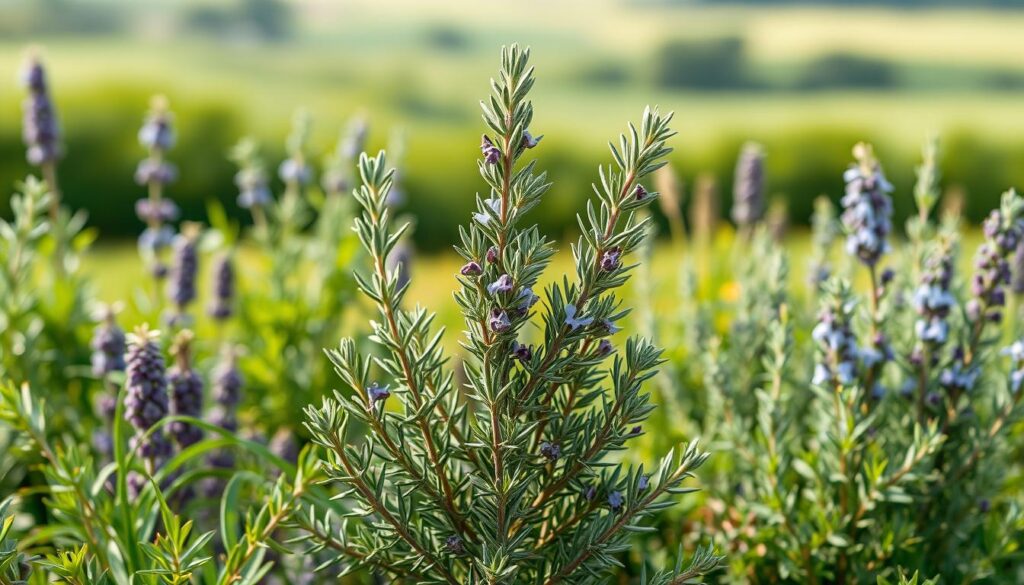
My experience shows that not all herbs are good neighbors for rosemary. This plant does best with companions that like the same growing conditions.
Thyme and Rosemary: Flavor Friends
Thyme and rosemary are great garden friends. They both love:
- Full sun exposure
- Well-drained soil
- Zones 5 to 9
- Similar height ranges (6-12 inches)
“In the garden, rosemary and thyme are not just herbs, but trusted allies.” – Garden Wisdom
Companion Planting Strategies
When planning your herb chart, think about pairing herbs wisely. Sage, lavender, and oregano are great with rosemary. They all like similar growing conditions, making a peaceful garden.
But, don’t plant basil near rosemary. They need different water and soil, which can harm both plants.
Smart Herb Combinations
Some top rosemary friends are:
- Marigolds (pest repellent)
- Chives (flavor enhancement)
- Sage (complementary growth)
- Thyme (similar Mediterranean roots)
Choosing the right herbs to grow together makes a strong and healthy garden. It helps plants grow well and uses your space wisely.
How to Plant Herbs for Companion Growing
Creating a successful herb garden is more than just throwing seeds into the ground. It’s an art that combines strategic placement, soil understanding, and careful garden design. I’ll guide you through the essential steps to develop a thriving herb garden that maximizes growth and flavor.
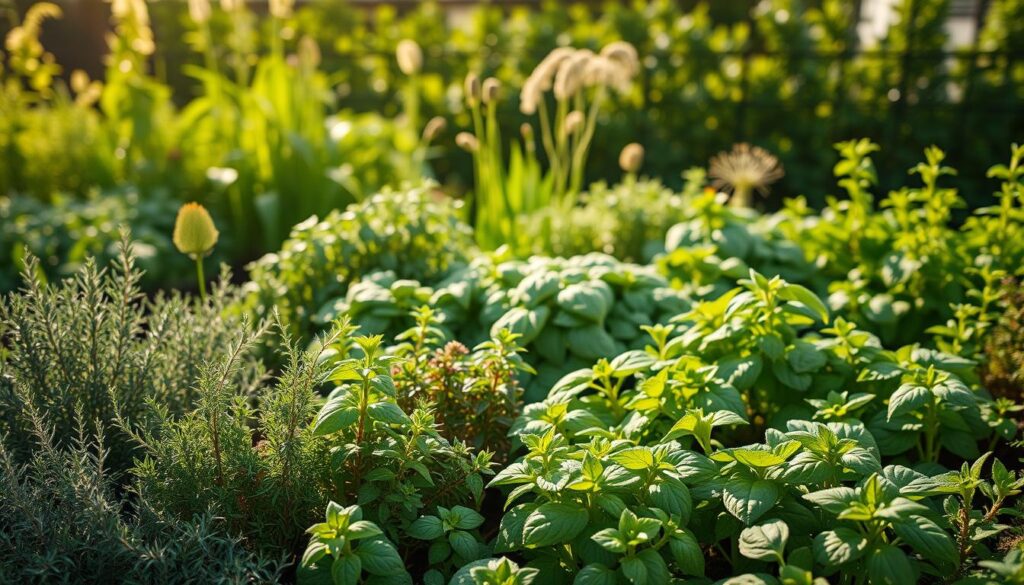
When planning your herb garden combinations, understanding soil compatibility is key. Not all herbs have the same growing requirements. This means careful selection and arrangement are essential for success.
Evaluating Soil Requirements
Different herbs have unique soil preferences. To ensure successful companion planting herbs, consider these critical factors:
- Soil pH levels
- Drainage capabilities
- Nutrient composition
- Sunlight exposure
“The secret to a flourishing herb garden lies in understanding each plant’s individual needs while creating a harmonious growing environment.”
Strategic Garden Space Arrangement
Arranging your herb garden effectively involves more than just looking good. I recommend following these practical guidelines:
- Group herbs with similar water requirements together
- Consider mature plant sizes when spacing
- Ensure adequate sunlight for each herb variety
- Rotate herb placements seasonally
By implementing these strategies, you’ll create a robust and productive herb garden. It will benefit from the power of companion planting.
Seasonal Considerations for Planting Herbs Together
Learning about the seasons in herb gardening can change how you plant herbs together. Over the years, I’ve learned that timing is key for a healthy and flavorful herb garden.
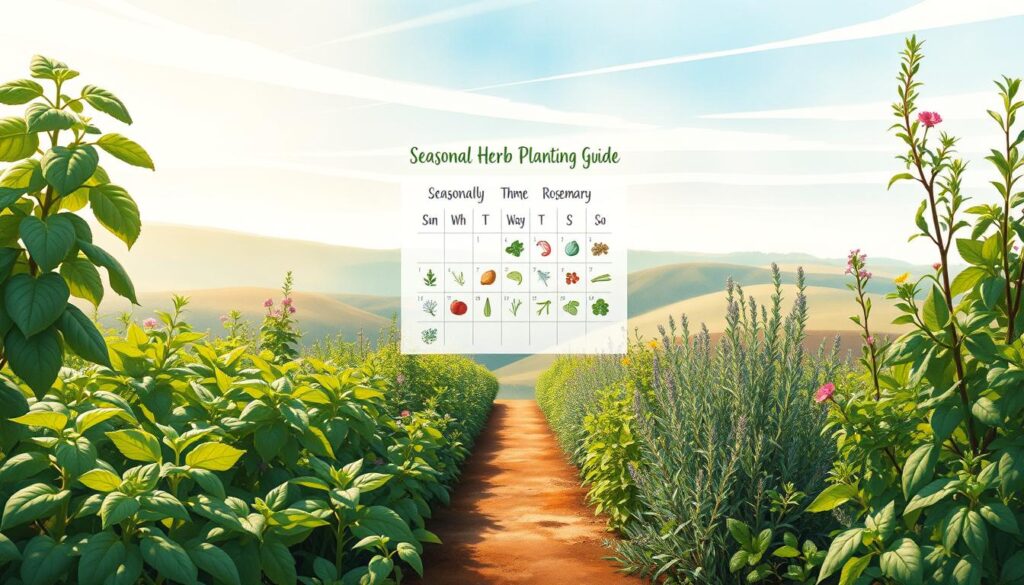
When making your herb pairing guide, remember these important seasonal tips:
- Most herbs need six hours of direct sunlight every day
- Soil pH should be between 6.5 to 7.5 for best growth
- Different herbs have their own temperature and sunlight needs
Optimal Planting Seasons
Spring is great for planting herbs like cilantro and dill that don’t like heat. Basil, a tender annual herb, should wait until the soil is 60-70ºF for it to grow well.
Climate Considerations
The local climate is very important for growing herbs. Perennial herbs like rosemary, thyme, and lavender can last for many seasons in the right place. Container gardening lets you move herbs inside when it’s too cold outside.
- Keep cold-sensitive herbs safe during winter
- Use south or west-facing windows for indoor herb care
- Check plants often for pests
By knowing these seasonal tips, you can make a strong and productive herb garden that grows all year.
Common Mistakes in Companion Planting
Companion planting herbs can be tricky, even for experienced gardeners. Knowing common mistakes helps create a thriving garden. My years of gardening have shown me that successful herb companion charts need careful planning and detail.
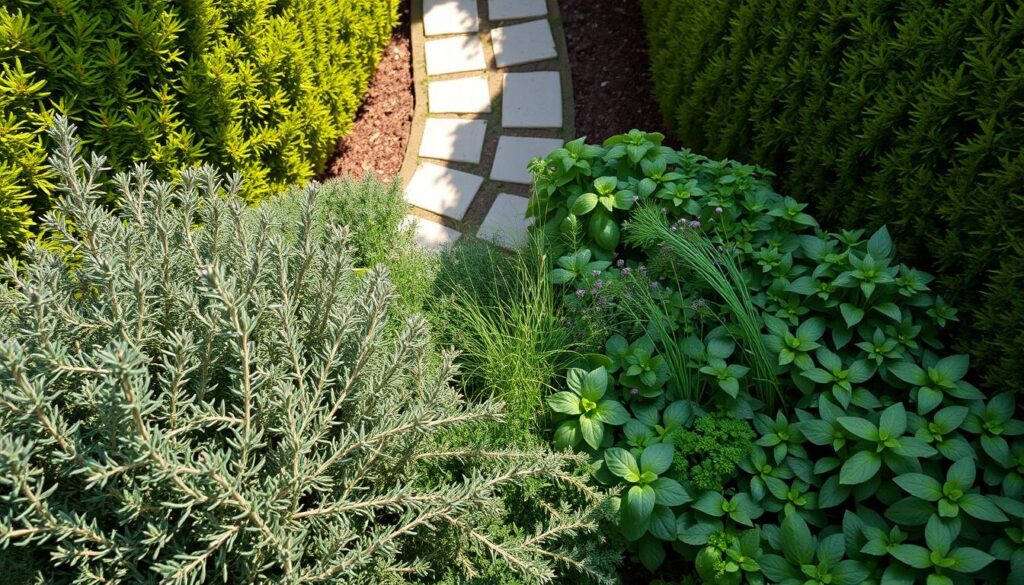
Beginner gardeners often make critical errors that can harm their herb garden’s health and productivity. Here are some key mistakes to avoid:
Overcrowding: Space Matters
One of the most common errors in companion planting herbs is overcrowding. Plants need space to grow well. Here are some tips to avoid overcrowding:
- Respect each herb’s individual growth requirements
- Check recommended spacing on seed packets
- Allow adequate air circulation between plants
- Consider mature plant sizes when planning
Ignoring Growth Habits
Different herbs have unique growth habits that can impact your garden’s success. Fast-growing herbs like mint can quickly take over slower-growing companions. When making your herb companion chart, consider:
- Comparing growth rates of different herbs
- Separating aggressive spreaders
- Understanding root system characteristics
- Monitoring nutrient competition
By focusing on these details, you’ll create a balanced and productive herb garden. Remember, successful companion planting is about creating harmony, not chaos.
Resources for Learning More About Companion Planting
Exploring companion planting? I’ve gathered top resources to make you a pro in pairing herbs. Whether you’re new to gardening or have years of experience, these tools will boost your knowledge. You’ll learn how to grow herbs together effectively.
Essential Books for Herbal Companion Planting
For garden lovers, I suggest a few key books. “Carrots Love Tomatoes” by Louise Riotte is a timeless classic. “Plant Partners” by Jessica Walliser also stands out, with its scientific take on gardening. These books will guide you in creating a balanced herb garden that fights pests and grows well.
Online Communities for Garden Enthuasiasts
The web is full of great places to learn about companion planting. Sites like GardenWeb and r/gardening on Reddit are hubs for gardeners to share tips. Local forums and Facebook groups connect you with gardeners who face similar challenges in your area.
Using these resources, you’ll turn your herb garden into a vibrant, connected space. Remember, companion planting is both an art and a science. Keep learning, trying new things, and enjoy the journey!
Source Links
- https://www.organicgardenco.com.au/blog/helpful-tips-for-your-garden/your-guide-to-companion-planting-herbs-combination/?srsltid=AfmBOoruI-T4f3TLvHhNE7j4aoki3zQKW4He5k1bs_fje9iSWidsDagc – Your Guide To Companion Planting Herbs & Combinations
- https://meadowlarkjournal.com/blog/what-herbs-can-be-planted-together – What Herbs Can Be Planted Together — Meadowlark Journal
- https://www.backyardboss.net/herbs-companion-planting/ – Companion Planting with Herbs: A Complete Guide
- https://www.thespruce.com/what-herbs-can-be-planted-together-8629150 – 14 Herbs That Can Be Planted Together for a Healthy and Lush Harvest
- https://www.gardendesign.com/vegetables/companion-planting.html – Companion Planting Guide for Vegetables & Herbs – Garden Design
- https://extension.wvu.edu/lawn-gardening-pests/gardening/garden-management/companion-planting – Extension | Companion Planting
- https://www.almanac.com/content/companion-planting-herbs – A How-to Guide: Companion Planting with Herbs
- https://plantura.garden/uk/herbs/growing-herbs/herbs-to-plant-together – Which herbs to plant together: companion herbs – Plantura
- https://www.bhg.com/gardening/vegetable/herbs/best-herbs-to-plant-together/ – The Best Herbs to Grow Together for a Flavorful Container Garden
- https://www.organicgardenco.com.au/blog/helpful-tips-for-your-garden/your-guide-to-companion-planting-herbs-combination/?srsltid=AfmBOoqeogcAFwTiYpKlB6Em_oGUcXy6FmX1A5ed9yBpheCsX_FS1lWo – Your Guide To Companion Planting Herbs & Combinations
- https://www.growcreatesip.com/blog/companion-planting-chart-for-herbs – Companion Planting Chart for Herbs
- https://www.thespruce.com/basil-companion-plants-8546753 – These Companion Plants Will Give You More Flavorful Basil—Here’s What to Plant
- https://meadowlarkjournal.com/blog/basil-companion-plants – The Best Basil Companion Plants — Meadowlark Journal
- https://www.organicgardenco.com.au/blog/helpful-tips-for-your-garden/your-guide-to-companion-planting-herbs-combination/?srsltid=AfmBOoo4rQEsjd3x9UqasQz92Xo76iJlsRkJMLcUogE2i7nfOUQvDLNh – Your Guide To Companion Planting Herbs & Combinations
- https://www.housedigest.com/1372350/companion-plants-mint/ – Plants That Will Grow Well Next To Mint – House Digest
- https://www.marthastewart.com/rosemary-companion-plants-8659379 – 11 Companion Plants You Should Grow Next to Rosemary—and 4 You Shouldn’t
- https://www.thespruce.com/rosemary-companion-plants-8584353 – Help Your Rosemary Grow Strong by Planting These 25 Companion Plants Nearby
- https://www.bloomingbackyard.com/rosemary-companion-plants/ – 10 Rosemary Companion Plants (& 5 Plants To Keep Far Away)
- https://www.gardeningknowhow.com/edible/herbs/hgen/companion-planting-in-your-herb-garden.htm – What Herbs Can Be Planted Together? Best Combinations To Try
- https://www.organicgardenco.com.au/blog/helpful-tips-for-your-garden/your-guide-to-companion-planting-herbs-combination/?srsltid=AfmBOoqT6Pcb3Ar1_6H4Vj1IA2n-PYSRUEGCkBY9fVROSJJy5OPyWuuz – Your Guide To Companion Planting Herbs & Combinations
- https://mgnv.org/plants/veg-herbs/seasonal-guide-growing-herbs/ – Season-by-Season Guide to Growing Herbs
- https://www.organicgardenco.com.au/blog/helpful-tips-for-your-garden/your-guide-to-companion-planting-herbs-combination/?srsltid=AfmBOorU7PaEjrggDabuZxzEmzgDeNIGz5Hr6syXPckvMN3RE4YI9PqJ – Your Guide To Companion Planting Herbs & Combinations
- https://www.epicgardening.com/companion-planting-mistakes/ – 15 Companion Planting Mistakes to Avoid This Season
- https://www.gardeningknowhow.com/edible/vegetables/vegetable-companion-planting-mistakes – Vegetable Companion Planting Mistakes – 9 Disastrous Pairings That Will Ruin Your Crops
- https://www.almanac.com/companion-planting-guide-vegetables – Companion Planting Chart and Guide for Vegetable Gardens
- https://extension.umn.edu/planting-and-growing-guides/companion-planting-home-gardens – Companion planting in home gardens
- https://attra.ncat.org/publication/companion-planting-resources/ – Concepts & Resources – ATTRA – Sustainable Agriculture
